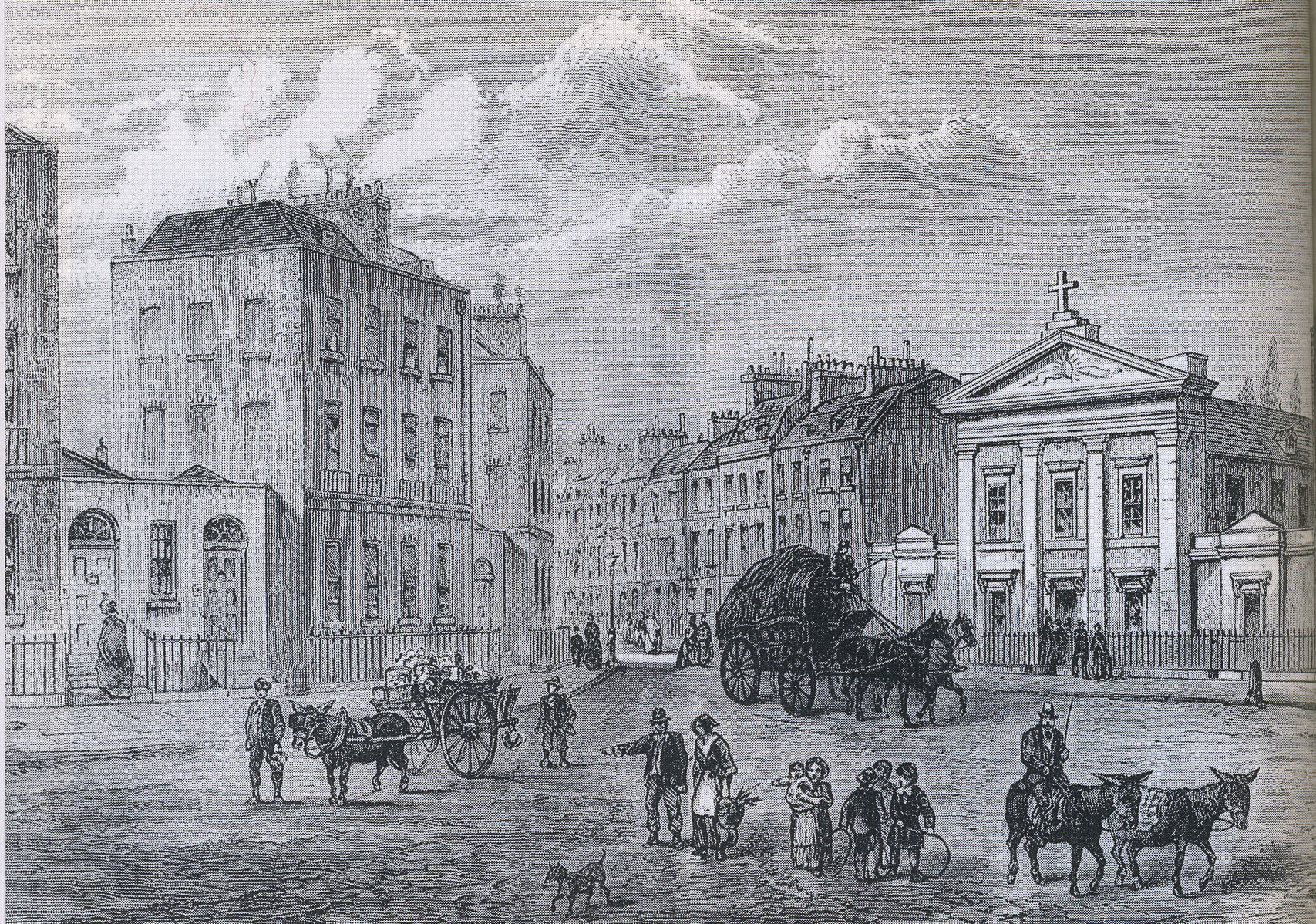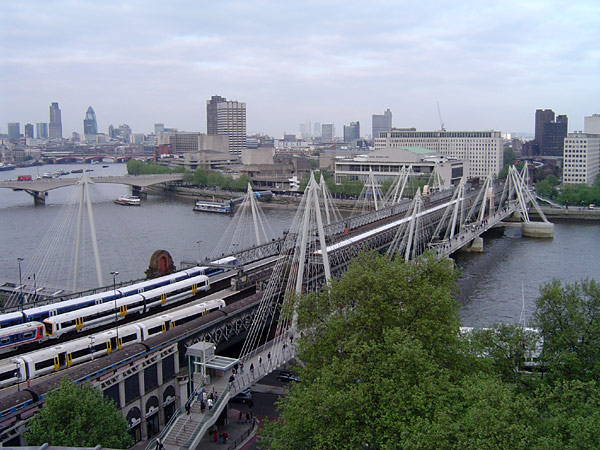|
St Pancras Female Orphanage
The St Pancras Female Orphanage is a former health facility in Somers Town, London. History The orphanage was established to care for female orphans in the local area in 1776. It was located in Hampstead Road where the foundation stone for premises completely rebuilt to a design by E. W. Hudson was laid by Lord Southampton on 28 January 1904. After the trustees of the orphanage vacated the building, the former orphanage was acquired by the National Temperance Hospital for use as an annex in 1945. The ground floor was subsequently converted for medical use. Following the closure of the National Temperance Hospital in 1990, the former orphanage became the home of the Margarete Centre which provides support to sufferers of substance abuse. The archives of the orphanage are now held at the Highgate Literary and Scientific Institution The Highgate Literary and Scientific Institution (HLSI) is an unincorporated society with trustees having charitable status under the Friendly Soci ... [...More Info...] [...Related Items...] OR: [Wikipedia] [Google] [Baidu] |
Saint Pancras Female Orphanage (34195715351)
In religious belief, a saint is a person who is recognized as having an exceptional degree of holiness, likeness, or closeness to God. However, the use of the term ''saint'' depends on the context and denomination. In Catholic, Eastern Orthodox, Anglican, Oriental Orthodox, and Lutheran doctrine, all of their faithful deceased in Heaven are considered to be saints, but some are considered worthy of greater honor or emulation. Official ecclesiastical recognition, and consequently a public cult of veneration, is conferred on some denominational saints through the process of canonization in the Catholic Church or glorification in the Eastern Orthodox Church after their approval. While the English word ''saint'' originated in Christianity, historians of religion tend to use the appellation "in a more general way to refer to the state of special holiness that many religions attribute to certain people", referring to the Jewish tzadik, the Islamic walī, the Hindu rishi or Sikh ... [...More Info...] [...Related Items...] OR: [Wikipedia] [Google] [Baidu] |
Somers Town, London
Somers Town is an inner-city district in North West London. It has been strongly influenced by the three mainline north London railway termini: Euston (1838), St Pancras (1868) and King's Cross (1852), together with the Midland Railway Somers Town Goods Depot (1887) next to St Pancras, where the British Library now stands. Historically, the name "Somers Town" was used for the larger triangular area between the Pancras, Hampstead, and Euston Roads, but it is now taken to mean the rough rectangle centred on Chalton Street and bounded by Pancras Road, Euston Road, Eversholt Street, Crowndale Road, and the railway approaches to St Pancras station. Somers Town was originally within the medieval Parish of St Pancras, Middlesex, which in 1900 became the Metropolitan Borough of St Pancras. In 1965 the Borough of St Pancras was abolished and its area became part of the London Borough of Camden. History St Pancras Old Church is believed by many to be one of the oldest Christi ... [...More Info...] [...Related Items...] OR: [Wikipedia] [Google] [Baidu] |
Hampstead Road, London
The A400 road is an A road in London that runs from Charing Cross (near Trafalgar Square, in London's West End) to Archway in North London. It passes some of London's most famous landmarks. The Northern line (Charing Cross and High Barnet branches) runs beneath the A400 between Charing Cross and Archway stations. Between Charing Cross and Euston Road ( Inner Ring Road), the road is in the London Congestion Charge zone. Route City of Westminster At its southern end, the A400 begins in the City of Westminster at a junction with the Victoria Embankment, opposite the Hungerford (Charing Cross) Bridge. There is no vehicular access to the bridge, which provides pedestrians with a route over the River Thames to the South Bank. At the junction, a separate set of traffic lights is provided for cyclists, who may cross between the A400 and Cycle Superhighway 3 with little conflict with other road traffic. Embankment tube station is to the north of the junction. The route runs w ... [...More Info...] [...Related Items...] OR: [Wikipedia] [Google] [Baidu] |
Baron Southampton
Baron Southampton, of Southampton in the County of Southampton, is a title in the Peerage of Great Britain. It was created in 1780 for the soldier and politician Charles FitzRoy. He was the third son of Lord Augustus FitzRoy, second son of Charles FitzRoy, 2nd Duke of Grafton, while Prime Minister Augustus FitzRoy, 3rd Duke of Grafton was his elder brother. Lord Southampton was also the great-great-grandson (through an illegitimate line) of King Charles II by his mistress Barbara Palmer, 1st Duchess of Cleveland. The Southampton title had previously been created for Charles FitzRoy, eldest natural son of Charles II and the Duchess of Cleveland and the elder brother of Henry FitzRoy, 1st Duke of Grafton, but had become extinct in 1774 on the death of his son William FitzRoy, 3rd Duke of Cleveland and 2nd Duke of Southampton, six years before the creation of the barony of Southampton. The first Baron Southampton's grandson, the third Baron, notably served as Lord-Lieutenant of N ... [...More Info...] [...Related Items...] OR: [Wikipedia] [Google] [Baidu] |
National Temperance Hospital
The National Temperance Hospital was a hospital in Hampstead Road, London, between Mornington Crescent and Warren Street. History The hospital opened as the London Temperance Hospital on 6 October 1873 by initiative of the National Temperance League, and was managed by a board of 12 teetotallers. Under its rules, the use of alcohol to treat patients was discouraged, but not outlawed: doctors could prescribe alcohol when they thought necessary for exceptional cases. In 1931, Chicago magnate Samuel Insull donated $160,000 to build a new extension, the "Insull Memorial wing" which was designed in the Art Deco style by architect William Binnie. It was renamed the National Temperance Hospital in 1932 and acquired the premises of the St Pancras Female Orphanage and Charity School, located on an adjacent site, in 1945. It was incorporated into the National Health Service in 1948 under the management of the North West Metropolitan Regional Hospital Board. After the hospital was closed ... [...More Info...] [...Related Items...] OR: [Wikipedia] [Google] [Baidu] |
Substance Abuse
Substance abuse, also known as drug abuse, is the use of a drug in amounts or by methods which are harmful to the individual or others. It is a form of substance-related disorder. Differing definitions of drug abuse are used in public health, medical and criminal justice contexts. In some cases, criminal or anti-social behaviour occurs when the person is under the influence of a drug, and long-term personality changes in individuals may also occur. In addition to possible physical, social, and psychological harm, the use of some drugs may also lead to criminal penalties, although these vary widely depending on the local jurisdiction.. Drugs most often associated with this term include: alcohol, amphetamines, barbiturates, benzodiazepines, cannabis, cocaine, hallucinogens (although there is no known ''psychedelic'', one of the three categories of hallucinogens, that has been found to have any addictive potential), methaqualone, and opioids. The exact cause of substance abu ... [...More Info...] [...Related Items...] OR: [Wikipedia] [Google] [Baidu] |
Highgate Literary And Scientific Institution
The Highgate Literary and Scientific Institution (HLSI) is an unincorporated society with trustees having charitable status under the Friendly Societies Act. Founded in 1839 in Highgate, north London, with the aim of helping local people to better understand new developments in industry and discoveries in science, it is now one the few surviving membership supported organisations which predate the widespread establishment of public libraries in the United Kingdom. Today its charitable purpose, from its historic building, is to offer opportunities for life-long learning through its courses, library, archives, art gallery, lectures, debates, cultural and social events. Origins The Industrial Revolution of the 18th and 19th centuries set in train a movement for self-improvement among all classes of society. The spirit of enquiry generated by the new scientific inventions and their development in manufacturing processes led to the formation, originally in the big industrial cities ... [...More Info...] [...Related Items...] OR: [Wikipedia] [Google] [Baidu] |
.jpg)



